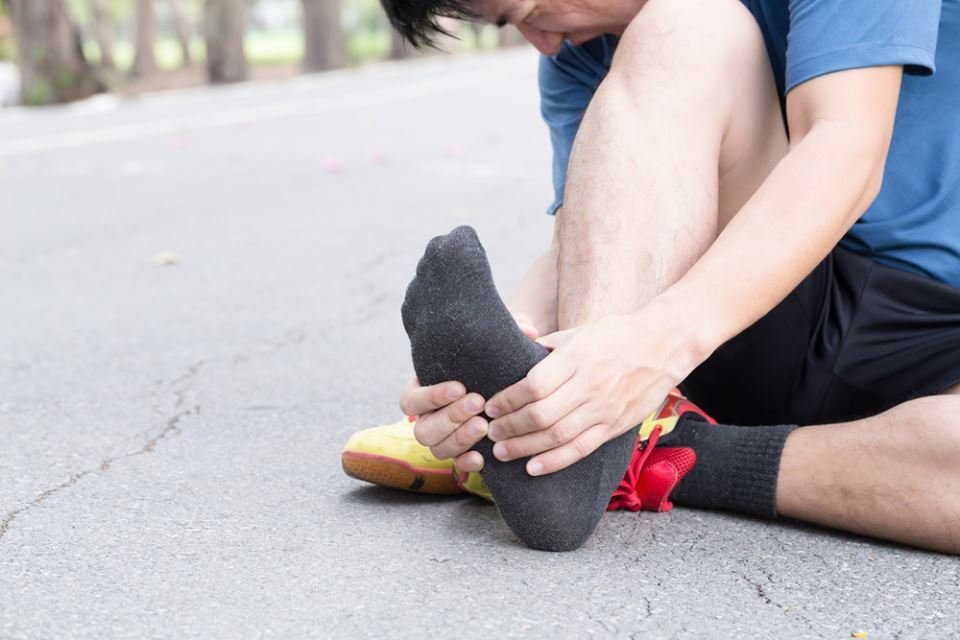For a runner, plantar fasciitis is the most painful than sports injuries. It will make our running plan bathing so that we can only stand to stay at home. But sports injuries are difficult to avoid, so how do minimize sports injuries?
As soon as possible from the restoration of health, we must always pay attention to the topic.
Disease Description
Plantar fasciitis, because of the foot of the muscles by the impact of external violence or prolonged walking, causing local muscle strain leading to local fascia inflammation. The most common symptom is the pain and discomfort of the heel, the tender point often in the foot near the heel, and sometimes more intense tenderness. When in the morning, the pain was obvious, excessive pain when walking intensified, severe patients and even stand there is pain during the rest.
Plantar fasciitis is caused by exercise-induced chronic injury. The most common reason is often a long walk, including climbing fitness, hiking, shopping, and other activities. A few days straight, it is easy to cause chronic foot injury, Leading to plantar fasciitis. Also, the heel is too hard to cause the oppression of the heel, often wearing high heels will increase the foot injury, and can also cause plantar fasciitis.
The main symptoms of plantar fasciitis: walking at the end of the heel pain; plantar tenderness has significant points; serious patients stand or even rest when there is pain. To diagnose the soles of the feet fascia, rather than the heel spur, you can use your thumb to press the middle of the heel, if you feel pain, it is the soles of the feet fascia.
Disease treatment
Ice:
Fascia fracture injury with ice helps to relieve pain and control inflammation. If you miss this opportunity, the inflammatory response has been carried out or in full swing, or ice, depending on the clinical symptoms.
Note that ice should be done at intervals of at least three minutes or more, it is important that each not more than fifteen to twenty minutes; the ice will cause too long local shrinkage caused by excessive blood vessels frostbite. Can be 10 minutes of ice, 10 minutes to rest, and then repeated.
Medical Treatment:
In Western medicine, topical diclofenac dimethylamine latex, ointment, etc. can be swelling and pain. Chinese medicine in the treatment of plantar fasciitis has also been a long history, and some anti-inflammatory, analgesics are available. Applying external application on the heel muscle to stimulate the nerve endings, dilate blood vessels, promote local blood circulation, improve the surrounding tissue nutrition, achieve swelling, anti-inflammatory and analgesic purposes.
Instrument Therapy:
(1) with the arch support the insoles
Foot insole with foot support can be evenly dispersed in patients with plantar pressure. Such insoles in the lower extremity weight loss when the plantar fascia effectively reduces the tension. Thereby reducing the repeated pull on the plantar fascia injury. “Ministry of Health Pain” also made a note: footpad is the treatment of plantar fasciitis effective way.
(2) Intramuscular effect stickers paste protection
In recent years, in the sports medical profession gradually popular muscle effect stickers (also known as “intramuscular paste”) movement protection, which was born in Japan, is currently popular in Europe and other professional athletes, including 2011 Australian Open singles runner-up Li Na, is also its beneficiaries.
The intramuscular sticking technique applied to plantar fasciitis can increase the skin and plantar muscle, and fascia gap, promote lymphatic and blood circulation, and reduce the pain caused by stimulating substances. The tension of the patch can reduce muscle tension and fatigue, and play a certain supporting role. In the process of rehabilitation of plantar fasciitis can be used intramuscularly affixed stickers to protect and promote healing.
Rehabilitation Fitness Training
At least one week after the pain began to disappear, you can first slowly adapt to increase the force of the foot movement gradually. Walking training is usually the beginning of the training when you can walk at a slightly faster pace of at least 30 minutes, without any pain, a gradual increase in walking distance and speed. This is a gradual process. If the process of training, there are obvious pain and discomfort, you can step back, and slow down the volume of training.
The use of intramuscular effect or support with tape technology protection is necessary, especially when not wearing special orthopedic insoles. Selecting the appropriate running shoes is also very important.
Training Methods: Before each training first stretch your foot, and then walk for about 5 minutes; after training, ice for 10 minutes, then stretch for about 30 seconds or so. Gradually increase the amount of exercise, know that you can be very comfortable running, and return to normal exercise. Refer to the following training plan:
- On the first day of walking 3 minutes jogging 1-minute repeat four times
- Rest in the next day
- On the third day of walking for 3 minutes, jogging for 2 minutes to repeat four times
- The fourth day is for rest
- Day 5 Walk 2 minutes, Jog 3 minutes; Repeat 4 times
- The sixth day is of rest
- Day 7 walk 2 minutes jog 4 minutes to repeat four times
Prevent Disease
- Plantar fasciitis patients should reduce their jump, run, walk, and other large foot movements. Do not run on the hillside and speed training. When running pay attention to the gastrocnemius and hind leg tendons to fully stretch.
- Every night you can use a hot water foot bath, to promote local blood circulation.
- Avoid heel to do repeated grinding step action.
- Selecting the appropriate shoes, especially during the rehabilitation process is very important. Wear serious, too tight, not enough support for running shoes, need to be replaced immediately. General running shoes, more than 640 walkings, there will be serious wear and tear; if by the time to count, the cumulative wear more than six months of shoes, generally need to be replaced.



